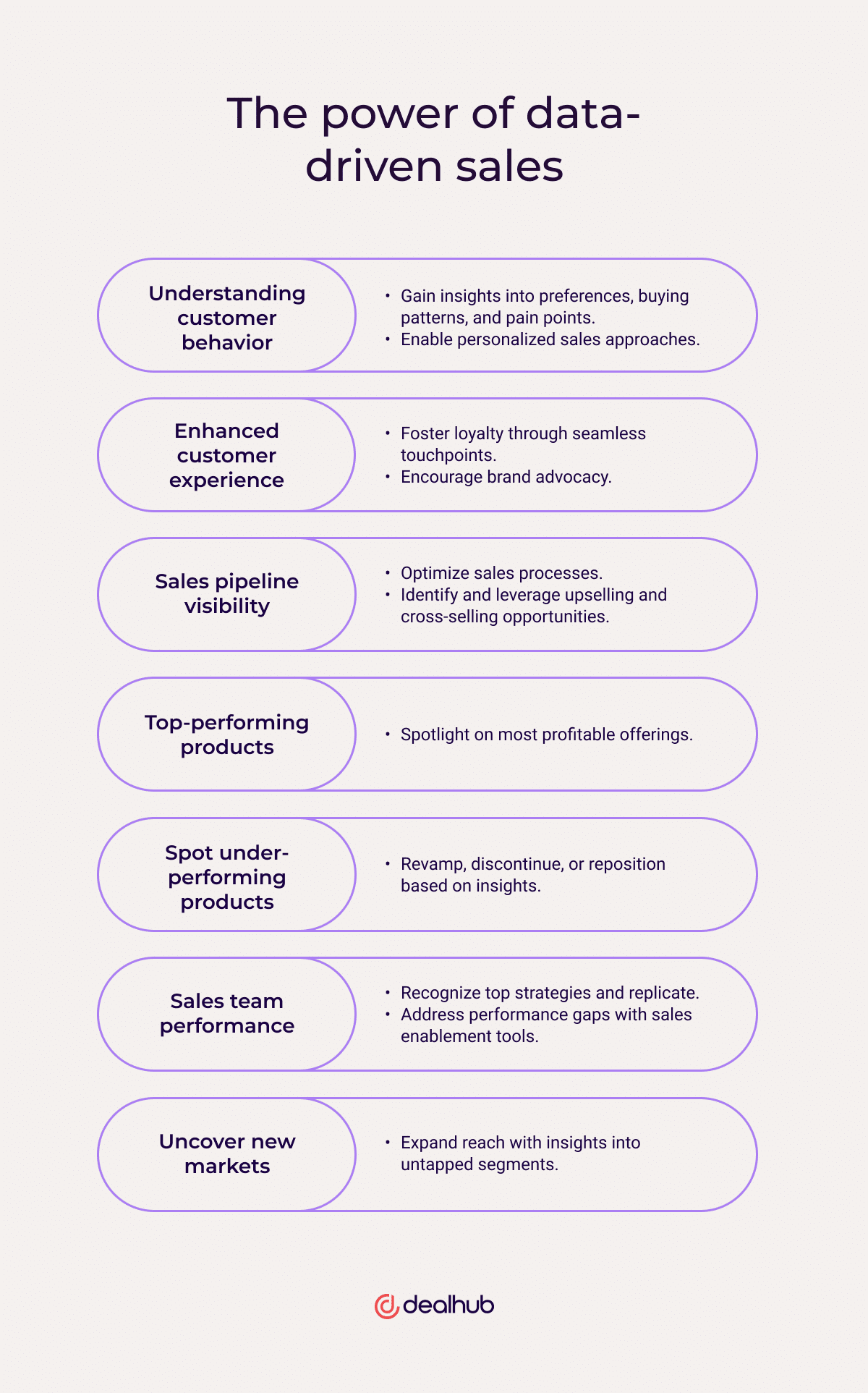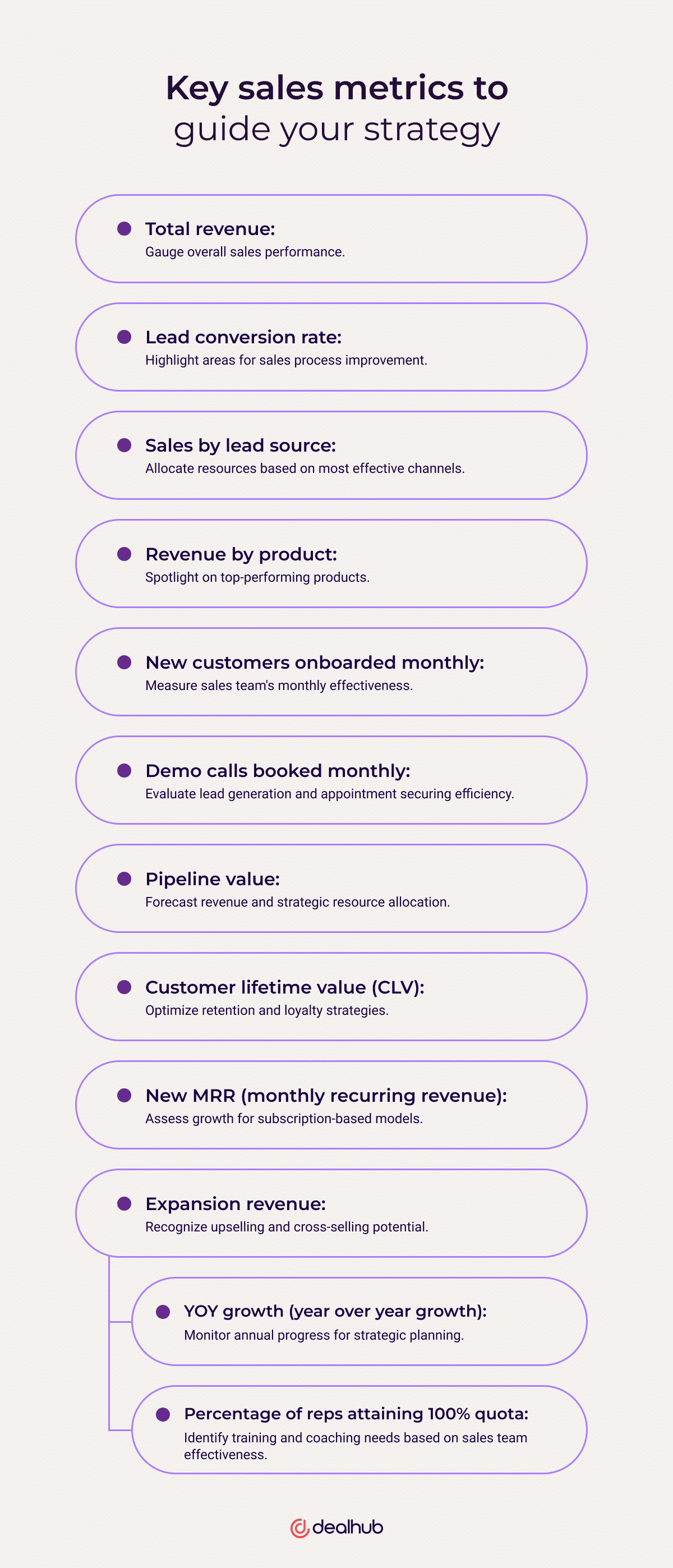Whether you’re new to data-driven sales or looking to further refine your approach, we’re here to offer practical tips and strategies to transform raw data into actionable insights. Discover how to make informed decisions, identify trends, and predict customer behavior using data, all aimed at fueling your sales engine for maximum performance.
Join us as we journey through the data landscape, demystifying the complexities and revealing the potential power that data can bring to your sales team. Regardless of your industry, this insight-packed blog is the compass you need to navigate the world of data-driven sales. Buckle up and prepare to supercharge your sales engine with the power of data!
Importance of data-driven sales
When it comes to sales, knowledge is power. Analyzing your sales data offers an array of benefits that can boost your bottom line and improve overall performance. Let’s explore some of the key advantages.

Understanding customer behavior: Sales analytics provides a window into the minds of your customers and why they act the way they do. Analyzing their preferences, buying patterns, and pain points empowers sales representatives to tailor their sales approach, creating personalized experiences that resonate with each prospect.
Improved customer experience: By understanding your customers better, you can provide a seamless, enjoyable experience at every touchpoint. Happy customers are loyal customers, and loyal customers are more likely to become brand advocates.
Sales pipeline visibility: Data-driven insights offer transparency into your sales pipeline. This visibility enables you to weed out bottlenecks, cut revenue leakage, prioritize deals, discover upselling and cross-selling opportunities, and optimize your sales process for increased efficiency.
Determining top-performing products: Knowing which products resonate with clients and which aren’t is vital to your sales success. This information lets you focus on the most profitable offerings.
Spot under-performing products: Equally important is identifying products that aren’t living up to their potential. Once you can pinpoint these offerings, you can decide whether to revamp, discontinue, or reposition certain products.
Sales team performance: Sales data sheds light on individual and team performance. Identifying top performers allows you to replicate their strategies across the team. Recognizing performance gaps enables companies to offer effective sales enablement processes to ensure everyone is firing on all cylinders.
Uncovering new market opportunities: Data can reveal untapped markets and customer segments, allowing sales and marketing teams to expand their reach and grow an organization’s customer base.
Sales data analysis steps for success
There are three main steps in data analysis for sales. These are:
- Data Collection: To kickstart your data-driven sales engine, begin by identifying meaningful data sources and sales analytics tools for collection. Some sources to mine for useful data include:
- CRM software
- customer surveys
- web analytics
- social media insights
- Sales Reports: Effective sales reports are vital to extracting valuable insights. Look for key performance indicators (KPIs) that measure:
- customer behavior
- market trends
- sales performance
These reports can be your guiding light in navigating the sales landscape.
- Sales Analysis: Choose the right sales analysis method based on your objectives. Different methods offer unique insights that can shape your sales strategies. Various types of analysis include:
- pinpointing trends
- prescriptive and predictive sales
- pipeline insights
- market research
- sales performance analysis
From data to actionable insights
Data is only useful if you know what you are measuring and understand how you want to use the insights you gather. Before pulling data, make sure you:
Set Your Business Objectives: Remember to start your data journey by defining clear and measurable business goals. What do you want to achieve? Whether it’s increasing revenue, expanding into new markets, or improving customer retention, your objectives will guide your data analysis efforts and dictate what data is the most relevant.
Determine the Questions that Arise from the Objectives: Your business objectives will lead to crucial questions you need answers to. Frame these questions carefully, as they will be the key to unlocking valuable insights from your data.
Identify the Sales Metrics that Answer Those Questions: Once you’ve established your objectives and asked the most relevant questions, pinpoint the specific sales metrics that will provide the answers you seek. These metrics will become the foundation of your data-driven decision-making process.
Sales metrics to analyze
Once you’re clear on what questions to ask and what answers you need, you’ll be able to zero in on sales metrics that will provide you with rich insights that can guide your sales strategy and approach.
Here are some great sales metrics to consider, depending on which part of the sales process you want to refine:

Total Revenue: The ultimate measure of sales success, tracking your total revenue is essential for gauging overall performance.
Lead Conversion Rate: Understanding how well your leads are converting into paying customers can highlight areas for improvement in your sales process.
Sales by Lead Source: Identifying the most effective lead sources ensures you allocate resources to the channels that drive the most revenue.
Revenue by Product: Analyzing revenue generated by each product can reveal your star performers and allocate resources accordingly.
New Customers Onboarded Monthly: Monitoring the influx of new customers month-to-month is an excellent indicator of your sales team’s effectiveness.
Demo Calls Booked Monthly: This metric reveals the efficiency of your lead generation efforts and the sales team’s ability to secure appointments.
Pipeline Value: Knowing the value of your sales pipeline will allow you to forecast revenue and allocate resources strategically.
Customer Lifetime Value (CLV): Understanding CLV, or the lifetime value of your customers, allows you to optimize customer retention and loyalty strategies.
New MRR (Monthly Recurring Revenue): For subscription-based businesses, tracking new MRR provides valuable insights into your growth trajectory.
Expansion Revenue: Identifying revenue generated from existing customers through upselling and cross-selling opportunities can significantly boost your revenue.
YOY Growth (Year Over Year Growth): Measuring year-over-year growth enables you to assess your progress and make informed strategic decisions.
Percentage of Reps Attaining 100% Quota: This metric gauges the effectiveness of your sales team’s performance and can provide insights into training and coaching needs.
Value of data-driven sales teams
By focusing more on data, sales and marketing teams have a real opportunity to optimize revenue. Using data can guide sales approaches and assists sales and marketing with finding new revenue opportunities. It’s also an integral strategy if your goal is to differentiate yourself from the competition.
Think of data as rocket fuel to propel your sales performance and drive revenue growth. After all, most organizations have a wealth of data at their fingertips. However, real sales leaders are the ones that can harness the raw power of KPIs and turn information into actionable insights used to drive strategy and provide direction for future selling opportunities.
Modern sales teams have data all around them – especially if they’ve already invested in social media, CPQ and billing platforms, or CRMs. These tools have rich reporting and analysis features that can be harnessed and mined for data. The real secret is to ask the right questions and then collect the necessary KPIs to build insights that can guide sales representatives! This, in turn, will increase future revenue while ensuring energy is spent on the most lucrative marketing and sales opportunities, giving your company more bang for its buck.





